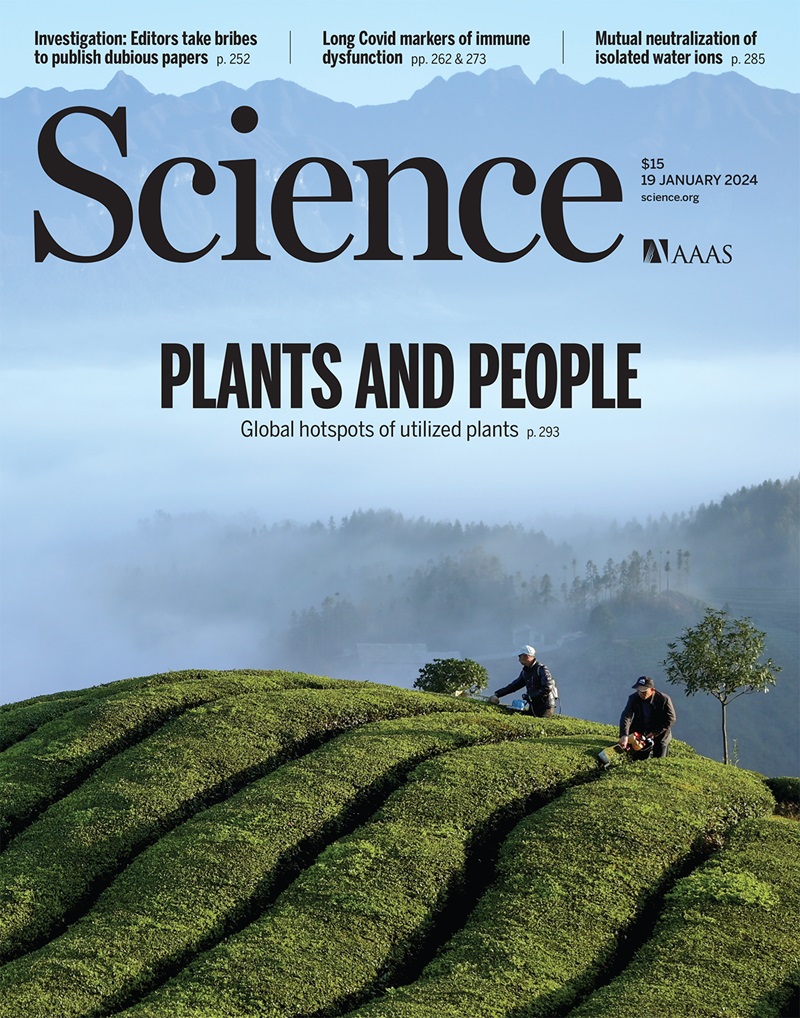Conserved noncoding cis elements associated with hibernation modulate metabolic and behavioral adaptations in mice
IF 45.8
1区 综合性期刊
Q1 MULTIDISCIPLINARY SCIENCES
引用次数: 0
Abstract
Cis-regulatory elements (CREs) drive phenotypic diversity, yet how CREs are causally linked to function remains largely unclear. Our study elucidates functions for conserved cis elements associated with the evolution of mammalian hibernation and metabolic flexibility. Genomic analyses revealed topologically associated domains (TADs) enriched for convergent changes in hibernators, including the Fat Mass & Obesity (Fto) locus. In this TAD, we uncovered genetic circuits for metabolic responses and hibernation-linked cis elements forming regulatory contacts with neighboring genes. Deletions of individual cis elements in mice differentially altered Fto, Irx3, and Irx5 expression, reshaping downstream gene expression programs and affecting metabolism, torpor, obesogenesis, and foraging in distinct ways. Our findings show how convergent evolution in hibernators pinpoints functional genetic mechanisms of metabolic control, with multiple effects encoded in single CREs.
与小鼠冬眠调节代谢和行为适应相关的保守非编码顺式元件
顺式调控元件(cre)驱动表型多样性,但cre与功能之间的因果关系仍不清楚。我们的研究阐明了与哺乳动物冬眠和代谢灵活性进化相关的保守顺式元件的功能。基因组分析显示,冬眠动物的拓扑相关结构域(TADs)富集于收敛性变化,包括脂肪质量(Fat Mass);肥胖(Fto)位点。在这个TAD中,我们发现了代谢反应的遗传回路和与冬眠相关的顺式元件与邻近基因形成调控联系。小鼠中单个顺式元件的缺失会不同地改变Fto、Irx3和Irx5的表达,重塑下游基因表达程序,并以不同的方式影响代谢、睡眠、肥胖发生和觅食。我们的研究结果表明,冬眠动物的趋同进化如何精确定位代谢控制的功能遗传机制,并在单个cre中编码多种效应。
本文章由计算机程序翻译,如有差异,请以英文原文为准。
求助全文
约1分钟内获得全文
求助全文
来源期刊

Science
综合性期刊-综合性期刊
CiteScore
61.10
自引率
0.90%
发文量
0
审稿时长
2.1 months
期刊介绍:
Science is a leading outlet for scientific news, commentary, and cutting-edge research. Through its print and online incarnations, Science reaches an estimated worldwide readership of more than one million. Science’s authorship is global too, and its articles consistently rank among the world's most cited research.
Science serves as a forum for discussion of important issues related to the advancement of science by publishing material on which a consensus has been reached as well as including the presentation of minority or conflicting points of view. Accordingly, all articles published in Science—including editorials, news and comment, and book reviews—are signed and reflect the individual views of the authors and not official points of view adopted by AAAS or the institutions with which the authors are affiliated.
Science seeks to publish those papers that are most influential in their fields or across fields and that will significantly advance scientific understanding. Selected papers should present novel and broadly important data, syntheses, or concepts. They should merit recognition by the wider scientific community and general public provided by publication in Science, beyond that provided by specialty journals. Science welcomes submissions from all fields of science and from any source. The editors are committed to the prompt evaluation and publication of submitted papers while upholding high standards that support reproducibility of published research. Science is published weekly; selected papers are published online ahead of print.
 求助内容:
求助内容: 应助结果提醒方式:
应助结果提醒方式:


